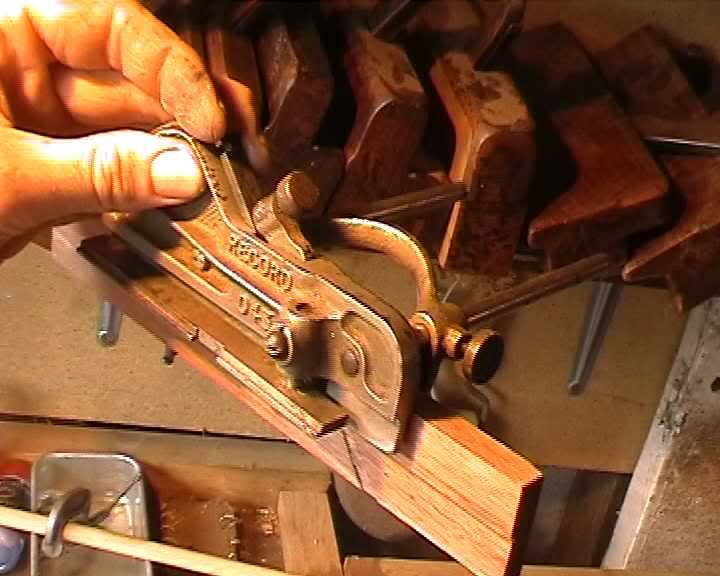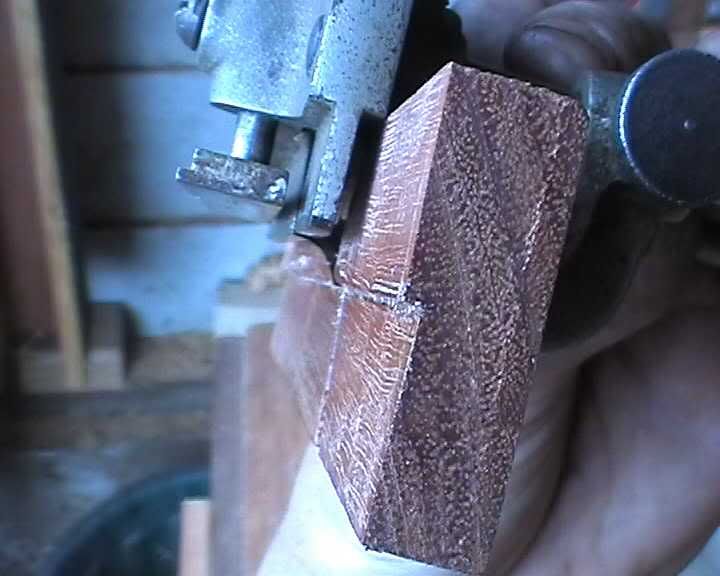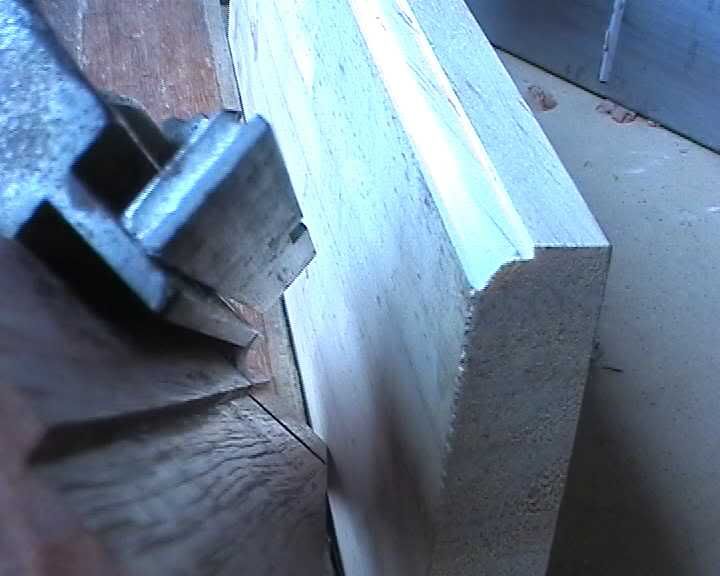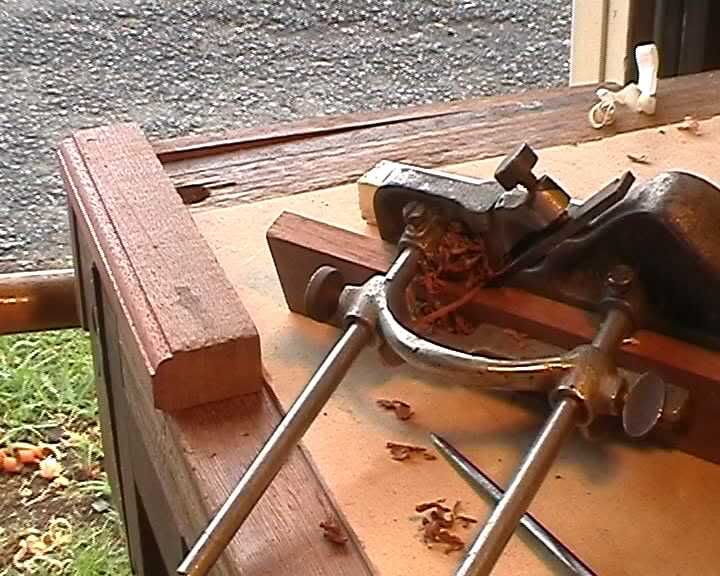 Thanks: 0
Thanks: 0
 Likes: 0
Likes: 0
 Needs Pictures: 0
Needs Pictures: 0
 Picture(s) thanks: 0
Picture(s) thanks: 0
Results 1 to 15 of 27
Thread: Finally got my Stanley 55 !!!
-
6th November 2005, 07:03 PM #1
 Finally got my Stanley 55 !!!
Finally got my Stanley 55 !!!
Yep. Finally got it ?! Yippee ! ...Won it on E-bay. Been wanting it for years. Cost me $450US. Ant she a bueat !!!


:confused: What ?!.....what do you mean by,,,I got ripped off !!!

 (I like being a smartass sometimes, sorry)
(I like being a smartass sometimes, sorry)
The true story is,,,,,
I can't afford one. (sniff). Not like that yank....'sailingAmerican'.....You sound like a nice bloke,,,but,,,geez your SPOILT !!! .....He says he's got several Stanley 55's, worth half a grand each, and that their really only 'collectors items'. That, the stanley 55 can do a lot of things, but not any too well.
yeh right vegimite. HAVE YOU EVER SHARPENED UP A BLADE !!! (kidding, you probably do)
(kidding, you probably do)
Anyway, cause I can't afford one (sniff), I've been 'forced' to make one. Well, at least make a plane that planes a small ogee like profile, like the 55 can do.
I like small profiles. I want to use such profiles in small cabinets etc. I like thin lines, not overally busy, like details. And also, I don't really have the room for making your regular sized stuff, like tables and chairs comfortably anyway.
What I've done is modify an average plane,,,,,, the record 43. Its a small plough plane, about the size of a block plane. Normally holds a small cutter, like a 1/4" that ploughs grooves like that used to hold drawer bottems etc. Instead I've removed the 1/4" blade and used a blade about 10mm instead
To make it work like the 55, I've had to make another skate. The 43 has only one skate you see. I've made this second skate into the wooden face of the fence. I've rebated this fence, lined up the edge of this rebate parallel with the 43's origional metal skate, but at a lower level, screwed it back to the metal fence, cut gaps in wooden fence so that the blade would peak through.
Done.
Not a great deal of support, like you would get from the sliding skate of a 55, but it seems to be ok, cause the blades are quite small. Different story probably if the blades were much wider I reakon. A nicker would be nice too. But, hey, you can't have everything. And it seemed to work fine without one.
Then to sharpen the blade. The only real importance, unlike wooden moulding plane blades, is that the blade must extend the same amount past the 2 skates.
The rest is up to me. Anything between the skates can be any profile I like. Which is whats attracting me to the 55. The 55 will even better this contraption of mine, in that cause it has a sliding skate, thats height adjustable, unlike my fixed wooden skate, I wouldn't have to worry about sharpening blade extention past the skates the same every time. I'd just sharpen the blade as I like. Put it in the 55, and adjust the sliding skate to what ever the newly sharpened blade ended up as. BUT, I don't have a Stanley 55 (sniff).
I don't have a Stanley 55 (sniff).
For my 43 contraption I just sharpened the blade between the skates like a roman ogee router bit.
Anyway it worked well.
He's some pictures. Thanks Derek.


Tried pine first, as you do. Then, I tried hardwood. Then I realised a problem. A big shaving trap. I'll have to widen the gap in the wooden fence to clear the shavings better. You can see it in this picture here. I've got a bad build up of shavings binding in the mouth area, that stops the plane from cutting.

Anyway I'm thrilled with the result. I'll just keep this plane permanently set this way, I think. Ready to go.
So, there you go, a poor mans Stanley 55.
-
6th November 2005 07:03 PM # ADSGoogle Adsense Advertisement
- Join Date
- Always
- Location
- Advertising world
- Age
- 2010
- Posts
- Many
-
6th November 2005, 07:10 PM #2

Jake---great job!
fwiw, I've wanted a Record 43 for grooving for sometime, but other things always seem to crowded their way in front of one. Now with an added ability, it makes it seem even more useful.
Do keep us updated as you make changes to chip ejection and uses, please.
Thanks again, Mike
-
6th November 2005, 09:48 PM #3

Well done!
Bloody well done!
I'm envious of your wooden moulding plane collection as well.
-
7th November 2005, 12:20 PM #4

Hi Mike and Clinton. Thanks for your comments. I just had to show someone. The wife just wouldn't understand. Not her thing, and no one around here to share this pashion with unfortunetly.
Got back from work just now,,,,,,, fixed that shaving trap problem. Just carved that gap wider with a gouge. No problems now.
Clinton, those moulding planes are pretty cheap you know. Like $10. If your not into profiles just yet, you can get some nice rebate or dado wooden planes that would be easy to sharpen. Especially like the wooden dado planes, myself. Double nickers, and skewed iron. Have to flattern them though, since their usually warped. There about $30. And no busting your gutts flatterning either, like that modern steel plane of yours ...ya poor bugger.
...ya poor bugger.
Mike. I found you can get the 43's pretty cheap. Since their not, you know, 'stanleys' . I got that one for about $15 at a flea market. Because the cutters are so thin, they work nicely, and quickly. Be good when making sets of draws I'd imagine.
Saves on router bits. The less the need to use that bloody noisey machine the better, I think.
-
7th November 2005, 01:02 PM #5

Mate,
99% of the wooden planes I see are just not in good enough condition to get up and going. Either the profile has been bashed around or the slot for the blade and wedge seems chopped up.
One of the guys on the forum is after a rounding plane for 19mm slats - so keep your eyes open for me.
Where do you get yours - garage sales or somewhere else?
I though I had a good thing going with one of the 2nd hand tool shops down here - they didn't measure up to the expectations I initially had though.
Keep up the good work
-
7th November 2005, 01:51 PM #6

Nice modification Jake.
An old mate is giving me his 55 with all the blades in excellent condition. It will cost me nothing but then it is going to a good home. - Wood Borer
- Wood Borer
-
7th November 2005, 02:10 PM #7
 Ho Jake,
Ho Jake, Originally Posted by apricotripper
Originally Posted by apricotripper
Around here, about the only thing I find are saws, and decent enough ones to clean up only here and there. Good thing I have a passion for the things!
I hear you about the bloody router. Gosh I have a hate-hate relationship with the thing. Useful at times, but the noise sets me on edge real quick.
So I'll keep looking for a bargin 043. Plenty to be had for a price. In the meantime, I'll keep using the 55. Overkill for many things for sure. Handy for others, especially in combination with H&Rs.
Take care, Mike
-
7th November 2005, 03:17 PM #8

99% of the wooden planes I see are just not in good enough condition to get up and going. Either the profile has been bashed around or the slot for the blade and wedge seems chopped up.
One of the guys on the forum is after a rounding plane for 19mm slats - so keep your eyes open for me.
Where do you get yours - garage sales or somewhere else?
I though I had a good thing going with one of the 2nd hand tool shops down here - they didn't measure up to the expectations I initially had though.
Hi, Clinton
Yeh, I think your right. A lot of them are pretty beat up. And if its profiled, its even harder, and even unfixable. They tend to warp around the mouth a lot, cause its thinner there.
BUT, I reakon, a lot of this 'fine tuning of hand planes' is taken way out of hand. Many beat up planes are still quite useable.
....Setting it with a sharp blade first and trying it out often reveals its problems. A lot of them you don't even have to flattern properly.
Even if they are uneven, and your planing as a consequence is uneven too, the planes depth stop will ensure the cut is the same all the way through. This is where many moulding planes differ to regular bench planes. The depth of your cut is always controlled. It always takes as a reference to one of your timbers surfaces, which you've flatterned in advance.,,,,,,,See, so they don't have to be as flat as one would like a bench plane to be. And a moulding plane often doesn't need incredible accuracy anyway. Often they just decorate your timber.
....Sometimes I come accross an old plane thats in such a bad way, you'd think 'why bother' , but then after you sharpen its blade, set it and try it, it still works !!! ......and initial sharpening can often be easy. Just a matter of backing it off heavily to a final polish, and not worrying about the bevel for the moment. This is often enough to test the plane.
... Most planes will still make coarse cuts even if badly damaged. The worser off it is, the more likely it won't be able to be set for a fine cut. And thats OK a lot of the time, as strange as it may sound. A coarse cut will often yeild a good untorn result on your wood, and only takes a few passes to do.
....Even if a plane with an integral depth stop, IS tearing the wood, when set coarse, what tends to happen, is that the last few passes are feathered by its depth stop . ie. your last few passes are light cuts, which often cleans up the previously torn marks in your timber, leaving a cleaner profile.
IMO, most of the problems occur when either the blade has lost its edge OR,,,,,you've set the blade tooo coarse, or fine,,,,,,,OR,,, your planing against the grain, which is something you should strive to forsee anyway.
BUT NOT because the plane body is dinged, worn, or cracked. My impression anyway.
Having said all that, I was lucky to be at an Auction that was selling dozerns of wooden moulding planes So I reakon, Auctions are your best bet.. 3 for $20 mostly. In good nick a lot of them. Try E-bay I suppose. That Hann Brunner guy sells them in groups. Like 10 for $200.
I'm not sure exactly what rounding plane you mean. I are you talking about one of these. A round. From a Hollow and round set. Its about 20mm accross. I might have a spare. I'll have to have a look later though.
Jake
-
7th November 2005, 05:33 PM #9

Hi Jake
That's a terrific job on the ol' #043. I really do not think that you should grieve over a #55 - there is only one person I know that actually uses his (Peter Byrne). Mostly (almost always?) they are bought up by would-be Galoots who believe them to be the Ultimate Plane, something of a Swiss knife. But they are incredibly hard to work, and soon languish on a shelf .... until sold to the next sucker ... uh serious woodworker.
I have a #45 which suffers a similar fate. I dip in-and-out of it - sort of a challenge, when I am desparate. I really want to do it justice, but it and the #55 have a common weakness - the lack of a mouth (that skate you mentioned is no substitute).
My taste in profiles is somewhat similar to yours. I prefer something uncluttered (or perhaps I am too cowardly to try?). Anyway, I prefer to use a near-complete half set of Hollows and Rounds (missing two planes - bought from a lady in a forrest - that's a story for another day), a Stanley #66 or a scratchstock I built (patterned after the LV one - see their website). I have a few molding planes, not many, and these seem to me to be a MUCH better proposition to the #55.
Incidentally, when I obtained a #043, one of the blades had been shaped at the rear into a bead. This was before I had another plane/scratchstock for beading. It worked pretty well with just the single skate. Had to be really sharp, mind you.
Regards from Perth
Derek
-
8th November 2005, 10:22 AM #10

Hi Jake
That's a terrific job on the ol' #043. I really do not think that you should grieve over a #55 - there is only one person I know that actually uses his (Peter Byrne). Mostly (almost always?) they are bought up by would-be Galoots who believe them to be the Ultimate Plane, something of a Swiss knife. But they are incredibly hard to work, and soon languish on a shelf .... until sold to the next sucker ... uh serious woodworker.
I have a #45 which suffers a similar fate. I dip in-and-out of it - sort of a challenge, when I am desparate. I really want to do it justice, but it and the #55 have a common weakness - the lack of a mouth (that skate you mentioned is no substitute).
My taste in profiles is somewhat similar to yours. I prefer something uncluttered (or perhaps I am too cowardly to try?). Anyway, I prefer to use a near-complete half set of Hollows and Rounds (missing two planes - bought from a lady in a forrest - that's a story for another day), a Stanley #66 or a scratchstock I built (patterned after the LV one - see their website). I have a few molding planes, not many, and these seem to me to be a MUCH better proposition to the #55.
Incidentally, when I obtained a #043, one of the blades had been shaped at the rear into a bead. This was before I had another plane/scratchstock for beading. It worked pretty well with just the single skate. Had to be really sharp, mind you.
Regards from Perth
Derek
Hi Derek.
I know what you mean about these combination planes like the #45 and #55.
I think when it comes to profiles there is really no easy way. Suppose thats why people like powered routers.
I've been using wooden moulding planes a while. Re-sharpening took quite a while to master though. I agree they have better mouth support compared to the minimum mouth support that you get in combination planes. And being generally simple in design is nice. The 45's and 55 like planes can be scary with all those moving parts.
BUT, sharpening a wooden plane just right, then setting them takes much practise. Worth while doing, sure. There a delight to use. But thats where a combination plane beats the wooden moulding plane, IMO. Because, you don't have to conform as strictly to maintaining the blades profile the same as its sole. This can be very time consuming when your learning to use them.
With a combination like the 55, you adjust the plane to the profile that you've sharpened. Makes it a lot easier.
A lot of the problems with these combination planes are solvable anyway. If you look at all the possible things that can go wrong,,,,take a methodolical (spelling?) approach when setting them to cover all these problems, the whole process gets quite reliable.
For the 45 this is what I worry about....
1. Is the blade real sharp ?.....
2. When I bind the blade in the plane, does the blade peak the same amount past each skate ?.....they got to be even.
3. Is the blade sitting right ? Sometimes due to bad casting or whatever, the blade protrudes out the side of one of the skates a little, rather than flush the side of the skate. Can fix this with a little grinding to side of blade.
4. If your using nickers, are they sharp, and inserted in the right way ? Are they flush with the sides of the skates like they should be? Are the nickers dropping too low ? If your planning a particularily hard wood if the nickers are extending too far out, it will impose too much resistance on your planing. Soft woods like pine no probs with this normally.
5. Finally, Are the skates and fence all parallel ? If not your develop a bind. The sliding skate and fence no doubt have a little play in them such that they won't always naturally set parallel. So I just eyeball it to ensure there all parallel to one another. Or just get the calipers out and just make slight adjustments. uno, comparing distances between skates and fence at the front and rear of the plane.
6. I get a big blob of wet wax like 'UBeaut traditional wax' (your the best Ubeat!) and run it along all skates and fence from rear to front. Not front to rear or you'll catch the blade and possibly into your fingers (done that! don't laugh). That greasing up can make all the difference.
I found if I covers all those points, I'm set. The 45's a pleasure to use. And tearout isn't really a problem, like one would think you'd get with minimum mouth support.
I mean just look at that 43 above and the finish it gave me. It has next to no mouth support, yet it glides nicely and has given me flawlesss finishes. A
I haven't had much experience with hollows and rounds. Lot to learn there. I've only got a couple. I've read that you make mouldings by making a 'V' cutter for your 45. Cut 'v's with this. Cut hollows running in the V's then rounds over the peaks.
Anyway
-
9th November 2005, 02:07 PM #11

Sensing this threads getting a bit old, so I'll keep it short.
But, I tried the 43 on end grain today. Expecting it to fail. Did the opposite. Clean cut on a piece of blue gum end grain. So there you go. No forward mouth support yet, it still worked very well. Can't get any better in this instance. You see, its results like these that make me question the significance of mouth support.
The impression I've got currently is ....mouth support may help. But in practise, its significance pales in comparision to just maintaining a sharp blade. Having mouth support, is clearly not particularily important.
Can see in this picture, how I've crudely opened the fence to solve that shaving jam problem.
Anyway (shrug) Seeya.
-
9th November 2005, 04:38 PM #12
 Elementary my dear Watson ... uh, JakeI tried the 43 on end grain today. Expecting it to fail. Did the opposite.
Elementary my dear Watson ... uh, JakeI tried the 43 on end grain today. Expecting it to fail. Did the opposite.
You do not need a mouth for planing end grain. Yessiree, that's right. All this talk of tight mouths for end grain (and tight mouths on shoulder planes) is misleading. Endgrain does not tearout if your blade is sharp enough. Good blade support and a lower cutting angle will make the process easier, but a small mouth (a mouth of any size) is irrelevant!
Have a look at this link. It is a little experiment I reported on and includes pictures to illustrate and support the points above.
http://www.woodcentral.com/cgi-bin/h...mes;read=68098
Regards from Perth
Derek
-
9th November 2005, 04:51 PM #13
 As demonstrated when you use a chisel on end grain too.
As demonstrated when you use a chisel on end grain too. Originally Posted by derekcohen
- Wood Borer
Originally Posted by derekcohen
- Wood Borer
-
9th November 2005, 06:17 PM #14

It's not too old a thread, Jake. Keep it going until you get bored with it. I enjoy the heck out of someone repeating the "get it sharp, keep it sharp" mantra.
In classes I teach, the number one problem is sharp edge tools. So I feel one aspect of my duty is drilling into people to just keep your edge tools sharp.
That is the number one culprit behind a lot of peoples' poor experience with hand tools: they're too dull to be effective. This especially applies to people attempting to use plow planes or combination planes.
And, btw, nice looking end grain work that. I've also stolen your 6 points above!
Take care,
Mike
-
9th November 2005, 08:45 PM #15

I agree with Mike, the points you bring up are more than worth the time and effort to read them.
Well done and I'd give you another greenie if I could.
Similar Threads
-
History of Stanley/Bailey Bench Planes
By silentC in forum HAND TOOLS - UNPOWEREDReplies: 29Last Post: 1st December 2010, 08:27 PM -
Tuning a Stanley #140 Skew Block Plane
By derekcohen in forum HAND TOOLS - UNPOWEREDReplies: 28Last Post: 5th September 2006, 04:23 PM -
New Stanley Bedrock Planes
By matt1245 in forum HAND TOOLS - UNPOWEREDReplies: 46Last Post: 30th June 2005, 08:06 AM -
Stanley 5
By routermaniac in forum HOMEMADE TOOLS AND JIGS ETC.Replies: 1Last Post: 24th June 2005, 06:23 PM -
Stanley #62 (low angle jack) renovation (long)
By derekcohen in forum HAND TOOLS - UNPOWEREDReplies: 27Last Post: 3rd March 2005, 04:42 PM






 Reply With Quote
Reply With Quote

